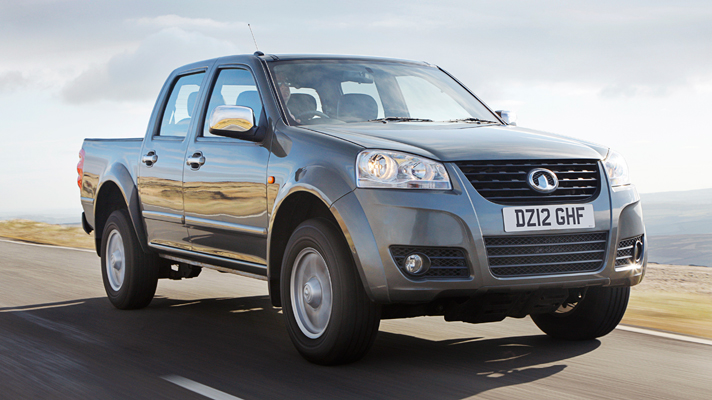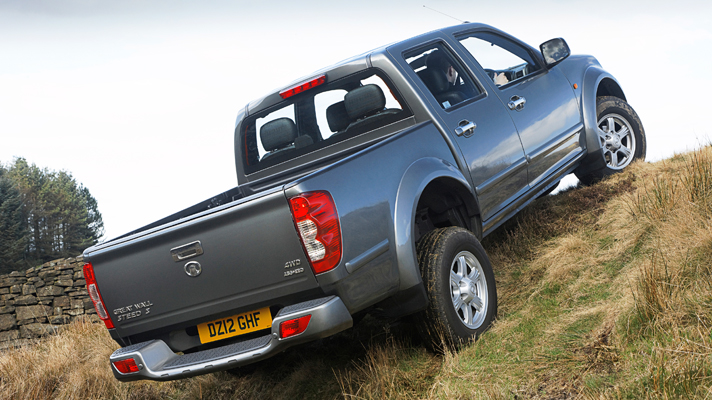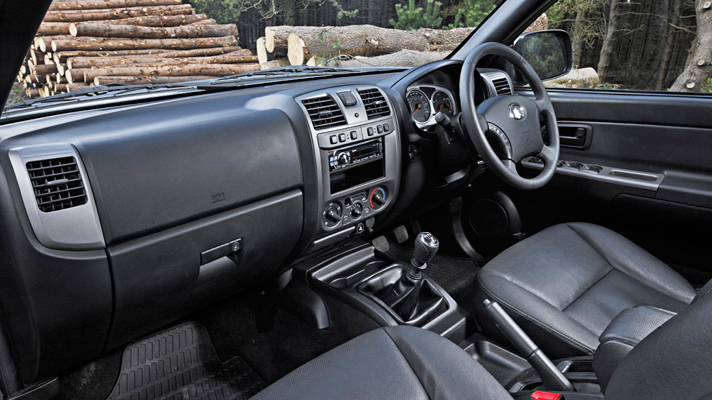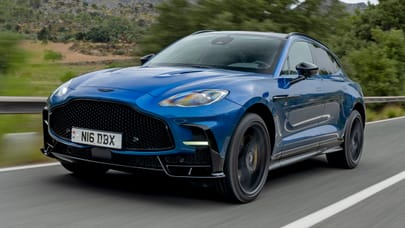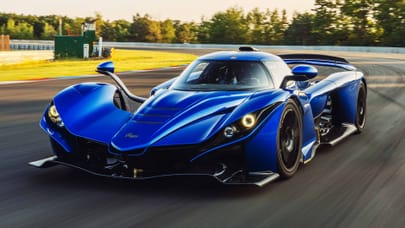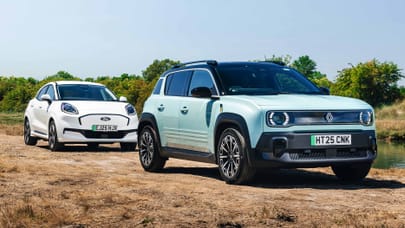
Driven: the Great Wall Steed
How do you double the value of a Japanese car? Fill it with petrol!
That rib-tickling side-splitter comes to you from the grand almanac of 1970s British Jokes About Japanese Cars. Seems bizarre, but that was what Brits did in the Seventies: took the mickey out of Japanese cars for being ugly, badly made and unreliable ("First prize in the raffle: one Japanese car. Second prize: two Japanese cars!").
You know what happened next. Japan turned out to be Actually Quite Good at building cars better than the glorious Austin Maxi and Morris Marina. Undeterred, and demonstrating our national inability to learn from history, we rehashed the same jokes for the Czechs' efforts in the late Eighties and Korean cars in the Nineties. Skoda and Hyundai, sound the irony klaxon!
As you gaze upon the glorious visage of the Great Wall Steed, the first Chinese-brand car to go on sale in the UK (yes, we've had Chinese produce in Britain before - the current generation of ‘MGs', most notably - but the mighty Steed is the first to appear under its original Chinese badging), you may see where this one is going. We've spent a decade guffawing and thigh-slapping at the laughable horror of China's home-grown cars: the Mini-aping knock-offs, the rickety saloons that folded like papier mâché in crash tests. Our collective inability to believe that a country once incapable of building decent cars could somehow, y'know, learn is about to bite us again. The dawn of the acceptable Chinese export is soon.
Not that the Steed is astonishing. It isn't. But it's not bad: an acceptably average pick-up truck with an acceptably below-average price tag and, more significantly, proof that the Chinese Revolution is far closer than you might think. The Great Wall badge might not have quite the cachet of, say, Porsche or Ssangyong, but it's hardly a global minnow. China's tenth-largest automaker employs 42,000 people around the world and builds 700,000 cars every year. The Steed has been China's best-selling pickup since 1998, shifting 120,000 examples each year.
And if you're picking a corner of the UK car industry on which to mount an assault, the utilitarian pickup sector is a good place to start. Pickup buyers want value, reliability and the ability to squelch across a post-Glastonbury mudpocalypse without sinking up to the window line, and aren't worried about immaculate panel gaps, Savile Row leather-stitching or a satnav system that knows where the nearest Pret A Manger is.
Accordingly, the Steed feels properly built. The panels line up, the switchgear is solid and it looks entirely passable, in a generic, pickup-truck sort of way.
To drive? Entirely passable, in a generic, pickup truck sort of way. In normal road-pottering, the Steed remains rear-wheel drive, but can be switched to high- or low-range 4WD via a set of plasticky switches on the dash. In any mode, the Steed is slow. Very slow. The 2.0-litre common-rail diesel has just enough grunt to reach around-town speeds, but venture to the dizzy north of 50mph and things rapidly become unrapid. Zero to 62mph is quoted as taking 17secs: it feels tardier. Swing into the outside lane of an uphill stretch of dual carriageway to pass a slow-moving truck and you'll find yourself rowing backwards through the gears as the dread hand of aerodynamics gets hold of the Steed's great bluff front end.
But, we can forgive ponderous performance if the price is right - £16,743 (£13,998 if you buy it as a business vehicle) gets you the entry-level Steed S, with 16in alloys, Bluetooth and upholstery described as ‘leather' but resembling the skin of no animal we've ever seen. Another £2,000 upgrades the Steed to SE spec, with a hard-top rear canopy, some chrome bits and rear parking sensors. That's a lot of vehicle for a sensible amount of cash, and though the ‘I drive a Great Wall Steed' line might not have the ladies ticking your card at the local speed-dating night, it could be worse. In China, the Steed is known as the Great Wall Wingle.
Here's the Steed-Wingle's biggest issue: it is yet to be Euro crash-tested. Great Wall says the Steed has been "subject to extensive crash-testing at [its] advanced testing facilities", pointing to its airbags, ABS and anti-intrusion door beams. Half-arsed road testers we are, TG didn't plunge the Steed into a concrete wall at 40mph to test its crashiness, so ultimately it boils down to whether you trust Great Wall's claims of crash-test competence, or would rather shell out another couple of grand for a crash-tested pickup. Undoubtedly, Chinese safety has improved in the last few years, but we'd probably hang on until Euro NCAP does its crashy stuff before loading our (fictional) offspring into one.
Top Gear
Newsletter
Thank you for subscribing to our newsletter. Look out for your regular round-up of news, reviews and offers in your inbox.
Get all the latest news, reviews and exclusives, direct to your inbox.
Even if the Steed's not for you, it confirms this: the Chinese aren't quite here yet, but they're coming. No joke.
Sam Philip
The numbers
1996cc, 4cyl, AWD, 141bhp, 225lb ft, 35.3mpg, 188g/km CO2, 0-62mph in 17.0secs, 85mph, 1835kg
The cost
£13,998
The verdict
Slow, cheap and unexciting in its own right. But the Steed is the start of something far greater: China's UK assault with cars you might consider buying
5/10
Trending this week
- Car Review
BMW iX3




